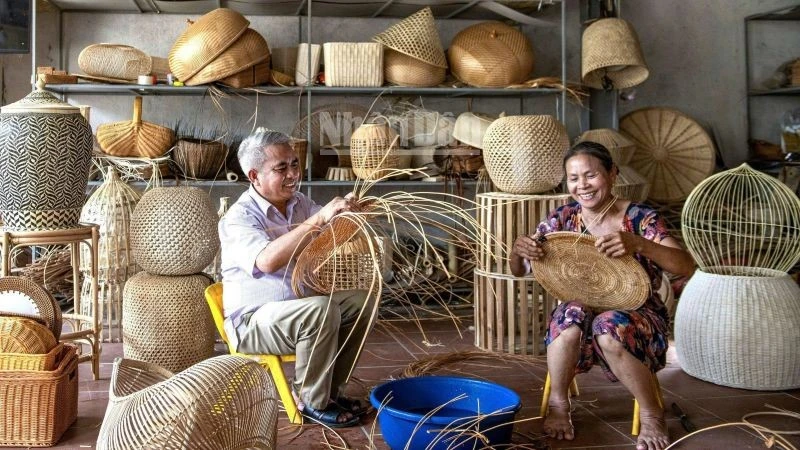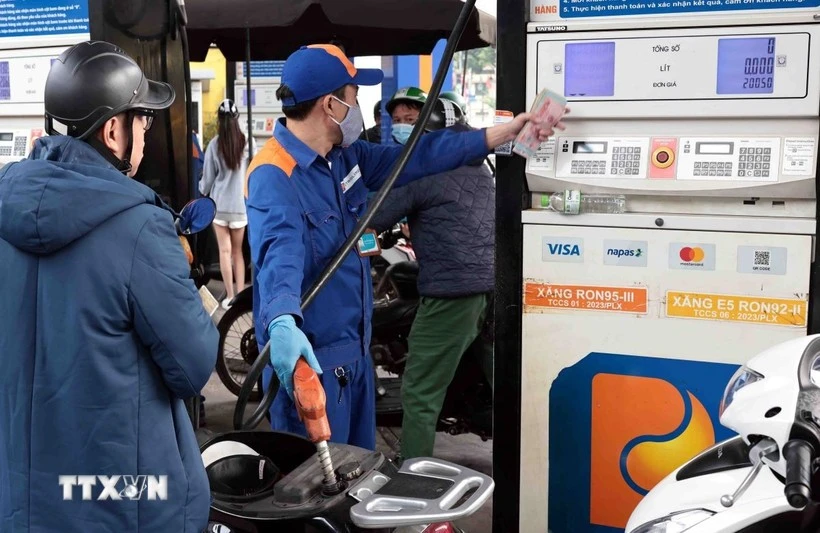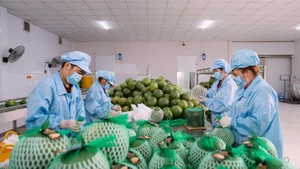The transition from “brown fuels” — including coal and diesel oil (DO) — to “green fuels” such as natural gas, hydrogen, and biomass fuels is now considered an inevitable pathway for Viet Nam’s energy sector. Power production is currently identified as Viet Nam’s largest source of carbon emissions, owing to the continued operation of multiple thermal power plants. Meanwhile, green fuels such as liquefied natural gas (LNG) and gas sourced directly from the B block field help reduce CO2 emissions and achieve higher thermal efficiency.
In addition, the switch to gas significantly helps reduce dust, SO2, and Nox — major contributors to air pollution. As such, the “greening” of fuel sources is not only a response to prevailing trends, but also an economic solution that allows enterprises to lower operating costs and meet increasingly stringent environmental standards.
The O Mon I fuel conversion project (Can Tho Thermal Power Company), operated under Power Generation Corporation 2 (EVNGENCO 2), stands as a strong example of the green transition underway in Viet Nam’s thermal power industry. Once completed, the plant is expected to consume approximately 1.2 billion m³ of gas per year from the Block B field.
According to calculations by the Electricity and Renewable Energy Authority (Ministry of Industry and Trade), the change will allow O Mon I Thermal Power Plant to cut 1.1 million tonnes of CO2 annually compared to operations running on diesel oil (DO), an emissions reduction equivalent to planting over 40 million new trees.
Huynh Thanh Phong, Director of Can Tho Thermal Power Company, said that the plant has a total capacity of 660 MW (Unit 1: 330 MW; Unit 2: 300 MW). The O Mon I fuel conversion project is part of the Block B–O Mon integrated gas-to-power chain, comprising three stages: Block B gas field development (upstream), the Block B–O Mon pipeline (midstream), and four gas-fired power plants (downstream) — O Mon I, II, III and IV — with a projected combined installed capacity of 3,800 MW.
Ngo Viet Hung, Deputy General Director of EVNGENCO 2, underscored that the project will not only reduce fuel input costs and equipment maintenance, but also cut greenhouse gas emissions considerably.
In parallel with fuel conversion projects, power plants are stepping up efforts to tap renewable energy potential, leveraging existing advantages in infrastructure and available land banks. Nguyen Le Hoang, General Director of Thac Mo Hydropower Joint Stock Company, said the Thac Mo hydropower reservoir covers over 11 km² and benefits from strong levels of solar radiation in southern Viet Nam, offering significant potential for solar power development. After five years of operation, the project has nearly recovered its initial investment.
Deputy General Director of EVNGENCO 2, Ngo Viet Hung, affirmed that investment in clean and renewable energy is an inevitable trend in order to meet near-term emission reduction requirements.
Similarly, Power Generation Corporation 1 (EVNGENCO 1) is also proactively researching and investing in clean energy. The entity has proposed four renewable energy projects in Lam Dong province, including three floating solar power projects and one pumped storage hydropower project, with a combined capacity of nearly 1,500 MW.
The drive for green transition is reflected not only in the scale of green energy projects being invested, but also in every step of power plant operation and power management. Companies are prioritising modern equipment investment, optimising control technology, and enhancing unit efficiency, while reducing fuel consumption and environmental emissions.
Several plants have adopted the remote operation centre system (OCC) — enabling more flexible monitoring, dispatching, and adaptive operations, which help save labour resources and energy. In addition, many units are accelerating tree planting, upgrading landscapes, and improving wastewater and ash residue treatment, contributing to a greener and more environmentally friendly brand identity for power plants.
The transition to renewable energy and modern technology is no longer considered a choice, but the inevitable path to ensure energy security of supply, sustainable economic development, and environmental protection.
Ta Dinh Thi, Deputy Chairman of the National Assembly’s Committee on Science, Technology and Environment
Ta Dinh Thi, Deputy Chairman of the National Assembly’s Committee on Science, Technology and Environment, affirmed: The transition to renewable energy and modern technology is no longer considered a choice, but the inevitable path to ensure energy security of supply, sustainable economic development, and environmental protection.
In practice, the green transition of Viet Nam’s power sector is not merely an energy development strategy, but also a national commitment in the journey towards a low-emission economy. The ongoing development of clean energy, the strengthened socialisation of investment, and technology renewal are ushering the electricity sector into a new era defined by modernity, sustainability, and environmental friendliness.
















